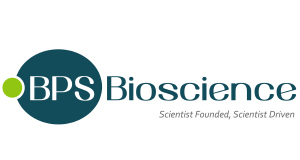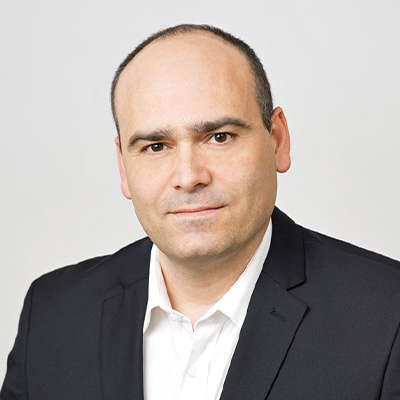B2M HLA-E Lentivirus
B2M HLA-E Lentivirus
Artikelnummer
BPS82433
Verpackungseinheit
2x 500 µl
Hersteller
BPS Bioscience
Verfügbarkeit:
wird geladen...
Preis wird geladen...
Products from BPS Bioscience require a minimum order value above 400€
Application: Expression of human B2M HLA-E in cells of interest.Generate B2M HLA-E expressing cell pools or stable cell lines by puromycin selection.
Background: HLA-E, or MHC (major histocompatibility complex) class I antigen E, is considered a non-classical MHC class I with low expression and fewer polymorphisms than the remaining HLA. HLA-E is composed of a heavy chain and β-2 microglobulin (B2M). It binds to specific peptides derived from the classical MHC class I (HLA-A, B, C and G), after these have been processed in the endoplasmic reticulum and the proteosome. The complex of HLA-E with the peptide is recognized by NK cells via the inhibitory receptor CD94/NKG2A/B. Binding to CD94/NKG2C however results in NK cell activation. Expression of HLA-E combined with knockout of HLA-A, B and C, in pluripotent stem cell (PSC) and their differentiated cell types, resulted in these cells escaping attack by CD8+ T cells and NK cytotoxicity. This strategy brings us closer to an almost universal cell donor reality, reducing the risk of immune rejection during cell transplants and alleviating the enormous investment of creating a PSC bank that has representation of all the haplotypes.
Description: B2M HLA-E Lentivirus are replication incompetent, HIV-based, VSV-G pseudotyped lentiviral particles ready to transduce most mammalian cells, including primary and non-dividing cells. These viruses result in the expression of B2M (beta-2 microglobulin) HLA (human leukocyte antigen)-E driven by an EF1a promoter. The lentiviruses also contain a puromycin selection marker (Figure 1). Figure 1. Schematic of the lenti-vector used to generate B2M HLA-E Lentivirus.
Formulation: The lentivirus particles were produced in HEK293T cells. They are supplied in medium containing 90% DMEM + 10% FBS. Virus particles can be packaged in custom formulations and produced at higher titers by special request, for an additional fee.
Storage Stability: Lentiviruses are shipped with dry ice. For long-term storage, it is recommended to store the lentiviruses at -80°C for up to 12 months from date of receipt. Avoid repeated freeze-thaw cycles. Titers can drop significantly with each freeze-thaw cycle.
Supplied As: Two vials (500 µl x 2) of lentivirus at a titer ≥107 TU/ml. The titer will vary with each lot; the exact value is provided with each shipment.
Target: B2M, HLA
Uniprot: P61769, P04439
Warnings: BiosafetyThe lentiviruses are produced with a SIN (self-inactivation) lentivector which ensures self-inactivation of the lentiviral construct after transduction and after integration into the genomic DNA of the target cells. of the HIV genes (gag, pol, rev) will be expressed in the transduced cells, as they are expressed from packaging plasmids lacking the packing signal and are not present in the lentivirus particle. Although the pseudotyped lentiviruses are replication-incompetent, they require the use of a Biosafety Level 2 facility. BPS Bioscience recommends following all local federal, state, and institutional regulations and using all appropriate safety precautions.Avoid freeze/thaw cycles.
Biosafety Level: BSL-2
SIN Vector?: Yes
References: Gornalusse G., et al., 2017 Nature Biotechnology 35:765-772.
Application: Expression of human B2M HLA-E in cells of interest.Generate B2M HLA-E expressing cell pools or stable cell lines by puromycin selection.
Background: HLA-E, or MHC (major histocompatibility complex) class I antigen E, is considered a non-classical MHC class I with low expression and fewer polymorphisms than the remaining HLA. HLA-E is composed of a heavy chain and β-2 microglobulin (B2M). It binds to specific peptides derived from the classical MHC class I (HLA-A, B, C and G), after these have been processed in the endoplasmic reticulum and the proteosome. The complex of HLA-E with the peptide is recognized by NK cells via the inhibitory receptor CD94/NKG2A/B. Binding to CD94/NKG2C however results in NK cell activation. Expression of HLA-E combined with knockout of HLA-A, B and C, in pluripotent stem cell (PSC) and their differentiated cell types, resulted in these cells escaping attack by CD8+ T cells and NK cytotoxicity. This strategy brings us closer to an almost universal cell donor reality, reducing the risk of immune rejection during cell transplants and alleviating the enormous investment of creating a PSC bank that has representation of all the haplotypes.
Description: B2M HLA-E Lentivirus are replication incompetent, HIV-based, VSV-G pseudotyped lentiviral particles ready to transduce most mammalian cells, including primary and non-dividing cells. These viruses result in the expression of B2M (beta-2 microglobulin) HLA (human leukocyte antigen)-E driven by an EF1a promoter. The lentiviruses also contain a puromycin selection marker (Figure 1). Figure 1. Schematic of the lenti-vector used to generate B2M HLA-E Lentivirus.
Formulation: The lentivirus particles were produced in HEK293T cells. They are supplied in medium containing 90% DMEM + 10% FBS. Virus particles can be packaged in custom formulations and produced at higher titers by special request, for an additional fee.
Storage Stability: Lentiviruses are shipped with dry ice. For long-term storage, it is recommended to store the lentiviruses at -80°C for up to 12 months from date of receipt. Avoid repeated freeze-thaw cycles. Titers can drop significantly with each freeze-thaw cycle.
Supplied As: Two vials (500 µl x 2) of lentivirus at a titer ≥107 TU/ml. The titer will vary with each lot; the exact value is provided with each shipment.
Target: B2M, HLA
Uniprot: P61769, P04439
Warnings: BiosafetyThe lentiviruses are produced with a SIN (self-inactivation) lentivector which ensures self-inactivation of the lentiviral construct after transduction and after integration into the genomic DNA of the target cells. of the HIV genes (gag, pol, rev) will be expressed in the transduced cells, as they are expressed from packaging plasmids lacking the packing signal and are not present in the lentivirus particle. Although the pseudotyped lentiviruses are replication-incompetent, they require the use of a Biosafety Level 2 facility. BPS Bioscience recommends following all local federal, state, and institutional regulations and using all appropriate safety precautions.Avoid freeze/thaw cycles.
Biosafety Level: BSL-2
SIN Vector?: Yes
References: Gornalusse G., et al., 2017 Nature Biotechnology 35:765-772.
| Artikelnummer | BPS82433 |
|---|---|
| Hersteller | BPS Bioscience |
| Hersteller Artikelnummer | 82433 |
| Verpackungseinheit | 2x 500 µl |
| Mengeneinheit | PAK |
| Produktinformation (PDF) | Download |
| MSDS (PDF) |
|

 English
English










